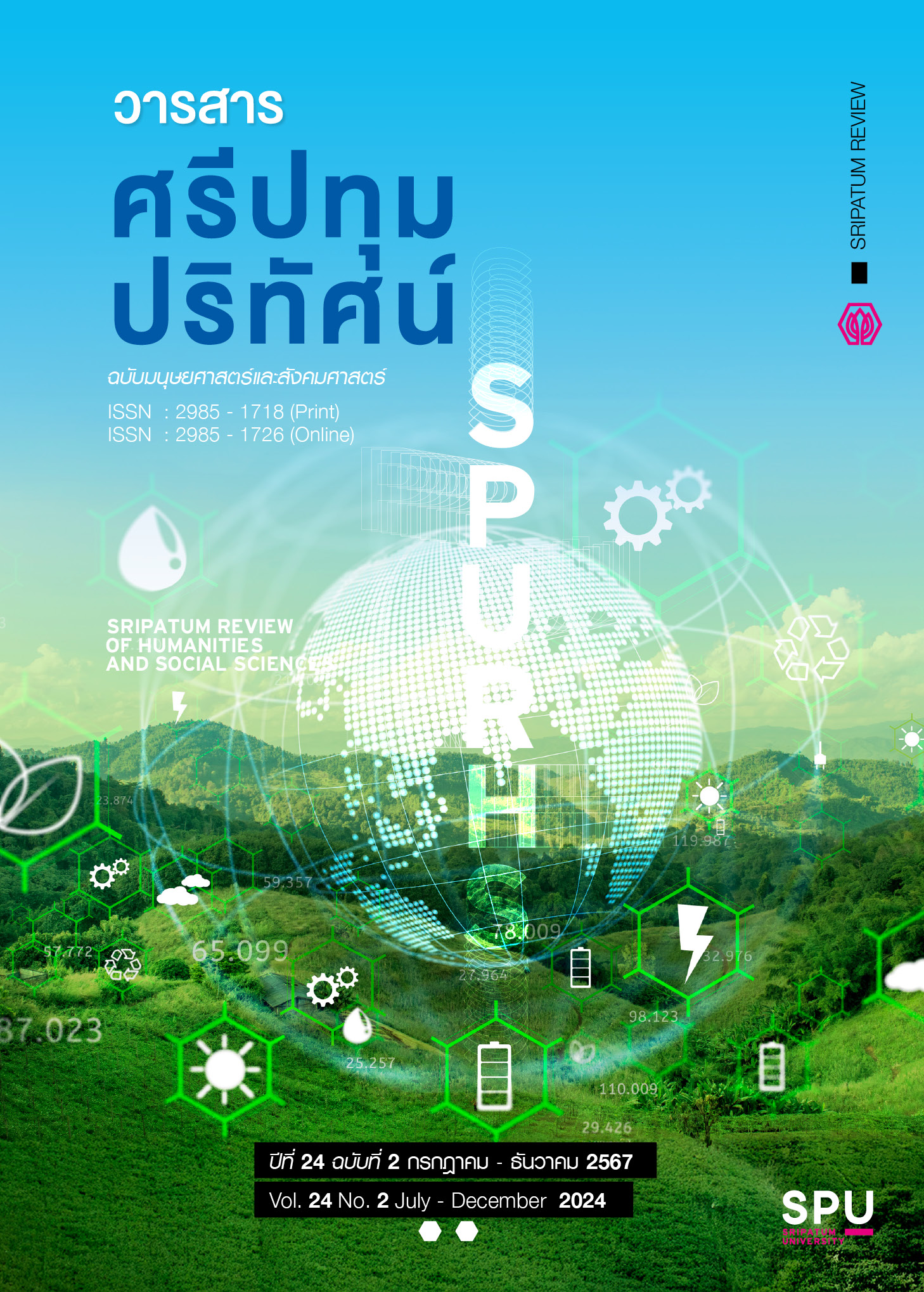The Relationship among Experiential Marketing, Customer Value, and Customer Loyalty of Generation Y Group in Hotel Business.
Main Article Content
Abstract
The purpose of this study is to investigate experiential marketing, the value received by customers, and loyalty, as well as to examine the relationships between experiential marketing and loyalty, and between customer value and loyalty among Generation Y customers in the hotel industry. The sample consists of 400 hotel guests aged between 22 and 41 years, representing Generation Y, who stayed in 4- and 5-star hotels in Thailand. A questionnaire was employed as the data collection tool. The findings reveal that most respondents have a high level of positive perception towards experiential marketing, particularly in terms of sensory experiences provided by the hotels, which significantly contribute to positive and memorable stay experiences. Regarding customer value, Generation Y customers perceive high-quality value from the service standards offered by 4- and 5-star hotels. In terms of loyalty, respondents express positive attitudes and intentions to revisit these high-standard hotels in the future. The results of the hypothesis testing indicate that both experiential marketing and the value received by customers have a moderately positive relationship with customer loyalty among Generation Y, with a significant correlation at the 0.01 level (sig. = 0.000).
Article Details

This work is licensed under a Creative Commons Attribution-NonCommercial-NoDerivatives 4.0 International License.
1. กองบรรณาธิการสงวนสิทธิ์ในการพิจารณาและตัดสินการตีพิมพ์บทความในวารสาร
2. บทความทุกเรื่องจะได้รับการตรวจสอบทางวิชาการโดยผู้ทรงคุณวุฒิ แต่ข้อความและเนื้อหาในบทความที่ตีพิมพ์เป็นความรับผิดชอบของผู้เขียนแต่เพียงผู้เดียว มิใช่ความคิดเห็นและความรับผิดชอบของมหาวิทยาลัยศรีปทุม
3. การคัดลอกอ้างอิงต้องดำเนินการตามการปฏิบัติในหมู่นักวิชาการโดยทั่วไป และสอดคล้องกับกฎหมายที่เกี่ยวข้อง
References
Anuratpanich, L. (2015). Generation Y is still bad. Bangkok: Thai Effect Studio. (in Thai)
Braga, V., & Afonso, C. (2022). Emotional triggers in millennial consumer behavior. Journal of Consumer Studies, 12(3), 45-59.
Department of Mental Health. (2020). Gen Y/Gen Me, the group that controls the fate of the world. [Online]. Retrieved from: https://dmh.go.th/news/view.asp?id=1251 (in Thai)
Đorđević, A., Topalović, S., & Marinković, V. (2021). Effects of the Perceived Value Dimensions on Customer Loyalty: Evidence from Hotel and Tourism Industries. Ekonomika preduzeća, 69(1-2), 55-64.
Gentile, C., Spiller, N., & Noci, G. (2007). How to sustain the customer experience: An overview of experience components that co-create value with the customer. European Management Journal, 25(5), 395–410.
Holbrook, M. B. (1999). Consumer Value: a Framework for Analysis and Research. Routledge: London.
Keller, K. L. (2012). Strategic Brand Management. NJ: Prentice Hall.
Khositsurangkakun, W. (2011). Customer Loyalty. Bangkok: Siam MB Publishing. (in Thai)
Kitpreedasaburi, B. (2010). Techniques for Creating Tools and Collecting Data for Research. 7th ed. Bangkok: Sri Anan Printing. (in Thai)
Kotler, P., & Keller, K. L. (2009). Marketing Management. China: Pearson Custom Business Resources: Person One.
Ministry of Tourism and Sports. (2022). Accumulated number of hotel guests in Thailand. Period January - July 2022. [Online]. Retrieved from: https://www.mots.go.th. (in Thai)
Moisescu, O. I., & Gică, O. A. (2020). The impact of environmental and social responsibility on customer loyalty: A multigroup analysis among generations x and y. International Journal of Environmental Research and Public Health, 17(18), 6466.
National Statistical Office Thailand. (2021). Size and structure of the population by age and gender. [Online]. Retrieved from: http://statbbi.nso.go.th/staticreport/page/sector/th/01.aspx. (in Thai)
Nukunsompratthana P. (2021). How to Increase Customer Loyalty and Repeat Purchases. [Online]. Retrieved from: https://www.popticles.com. (in Thai)
Prachachat. (2022). “Hotels” indicate business is gradually recovering. It is expected that in the second half of the year the occupancy rate will surge to more than 50%. [Online]. Retrieved from: https://www.prachachat.net/tourism/news-976024. (in Thai)
Putra, I. B. M., Artajaya, M., & Febrianto, I. G. A. (2023). The Role of Dining Experience on Customer Loyalty and Customer Satisfaction at the Mywarung Pererenan Restaurant. Journal Gastronomy Indonesia, 11(1), 44-52.
Rane, N. L., Achari, A., & Choudhary, S. P. (2023). Enhancing customer loyalty through quality of service: Effective strategies to improve customer satisfaction, experience, relationship, and engagement. International Research Journal of Modernization in Engineering Technology and Science, 5(5), 427-452.
Schmitt, B. H., & Rogers, D. L. (2008). Handbook on Brand and Experience Management. UK: Edward Elgar Publishing Limited.
Silanoi, L. (2015). Sample size determination for survey and experimental quantitative research design. Bangkok: Bangkok Blueprint.
Silva, R., Torres, J., & Almeida, F. (2022). Value perception in hotel services: Quality vs. cost. International Journal of Hospitality Studies, 8(4), 200-218.
Sittichai S. & Khunon S. (2015). Measuring Customer Loyalty in the Hotel Business. Journal of Executive Studies, 35(1), 64-74. (in Thai)
Stephanie, N. M., Hayko, D.L., & Phillips, J. (2009). What drives college-age Generation Y consumers. Business Research, 62(6), 617-628.
Strauss, W., & Howe, N. (1991). Generations: the history of America's. Future, 1584, 2069. New York: William Marrow and Company Inc.
Wongrattana, C. (1998). Techniques for Using Statistics in Research. 7th ed. Bangkok: Chulalongkorn University Book Center

